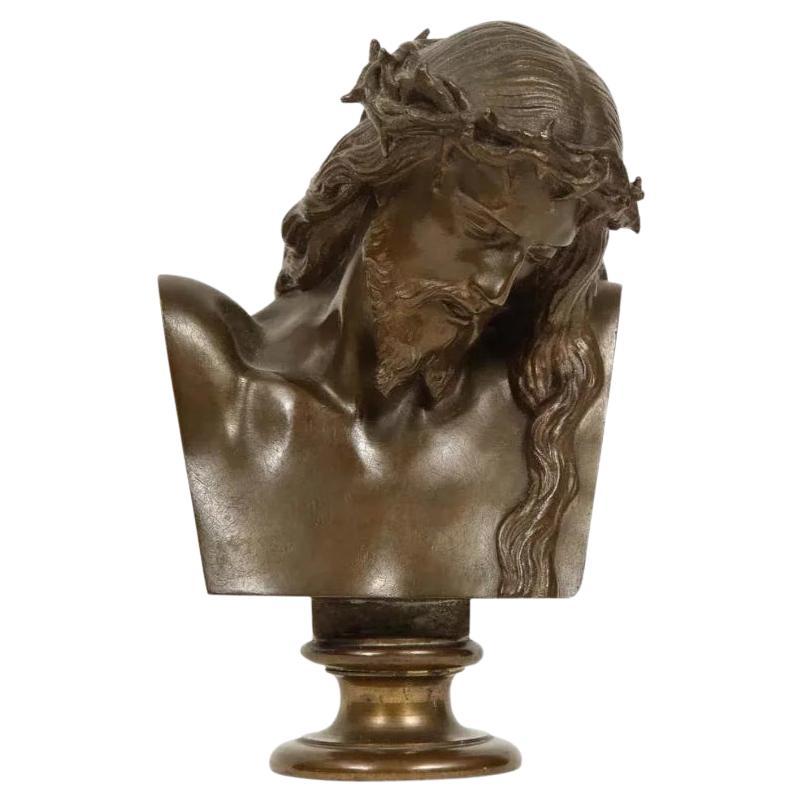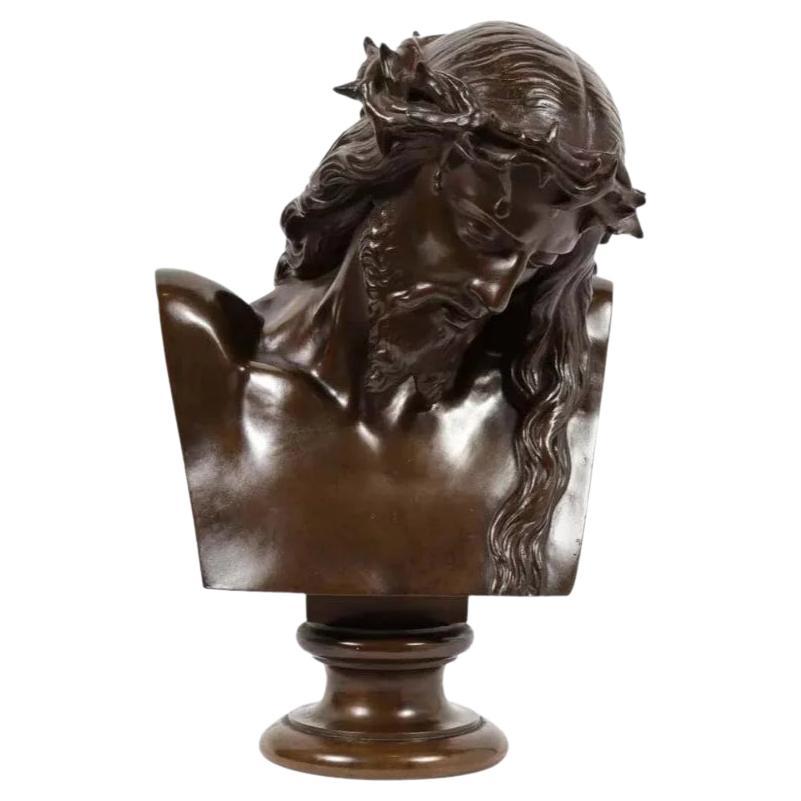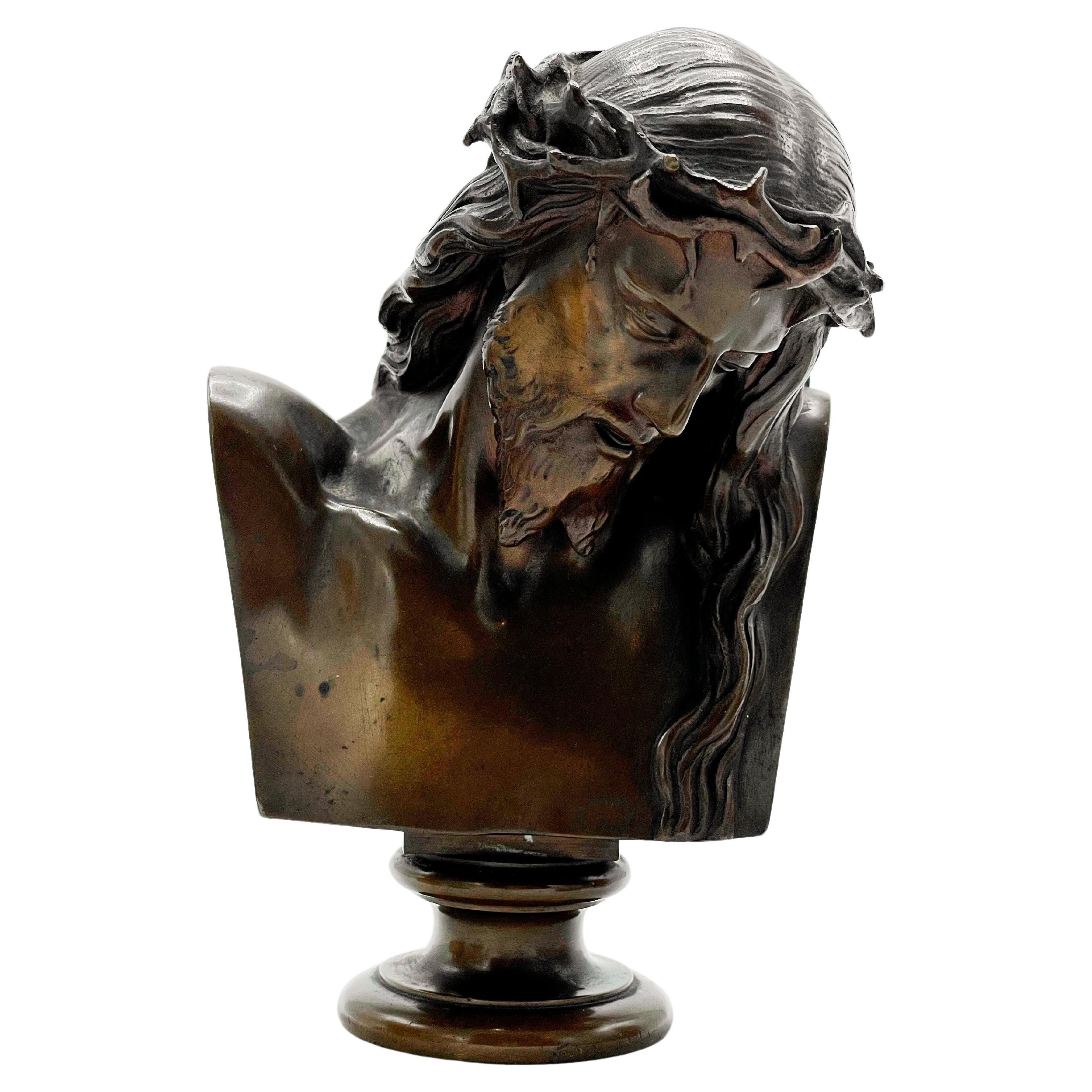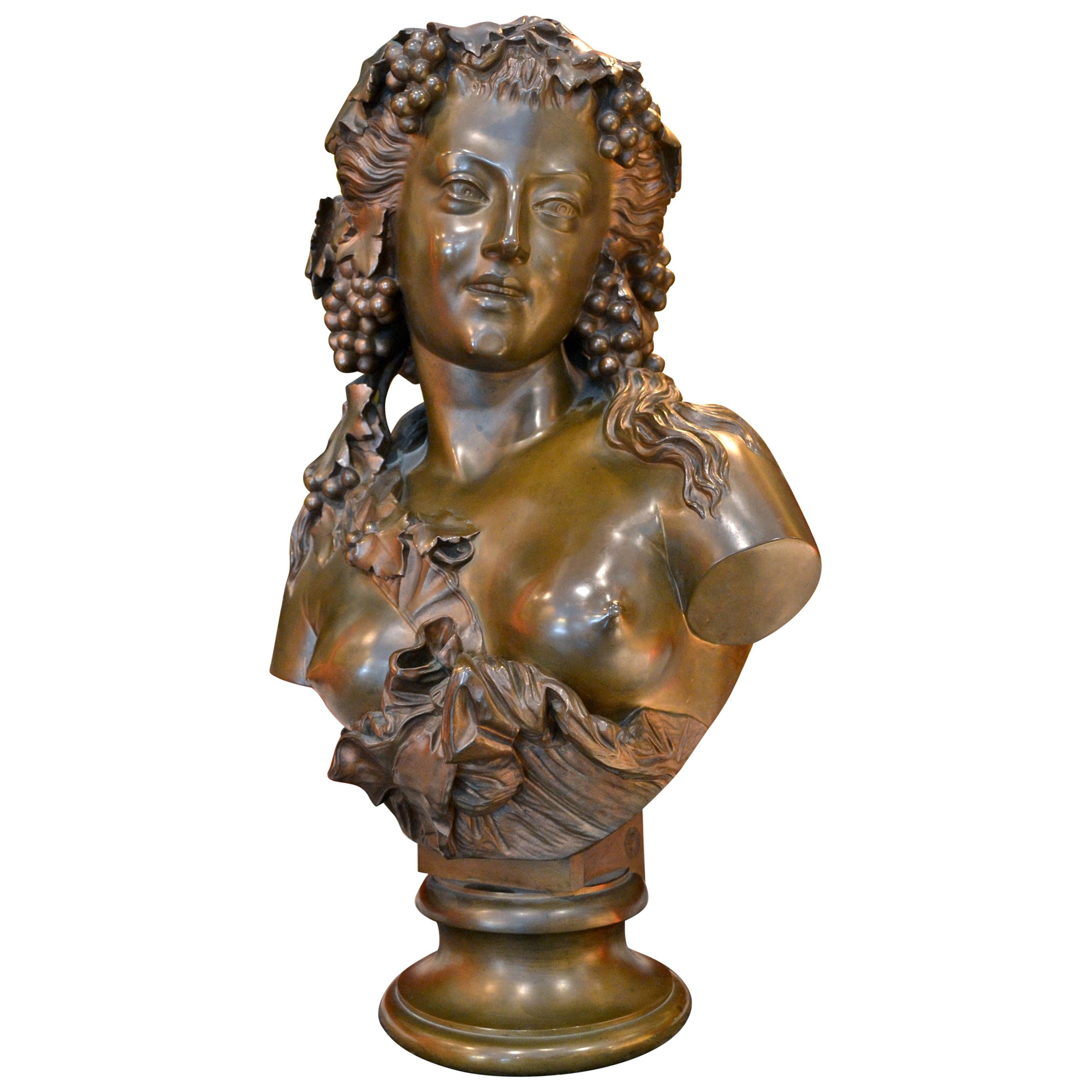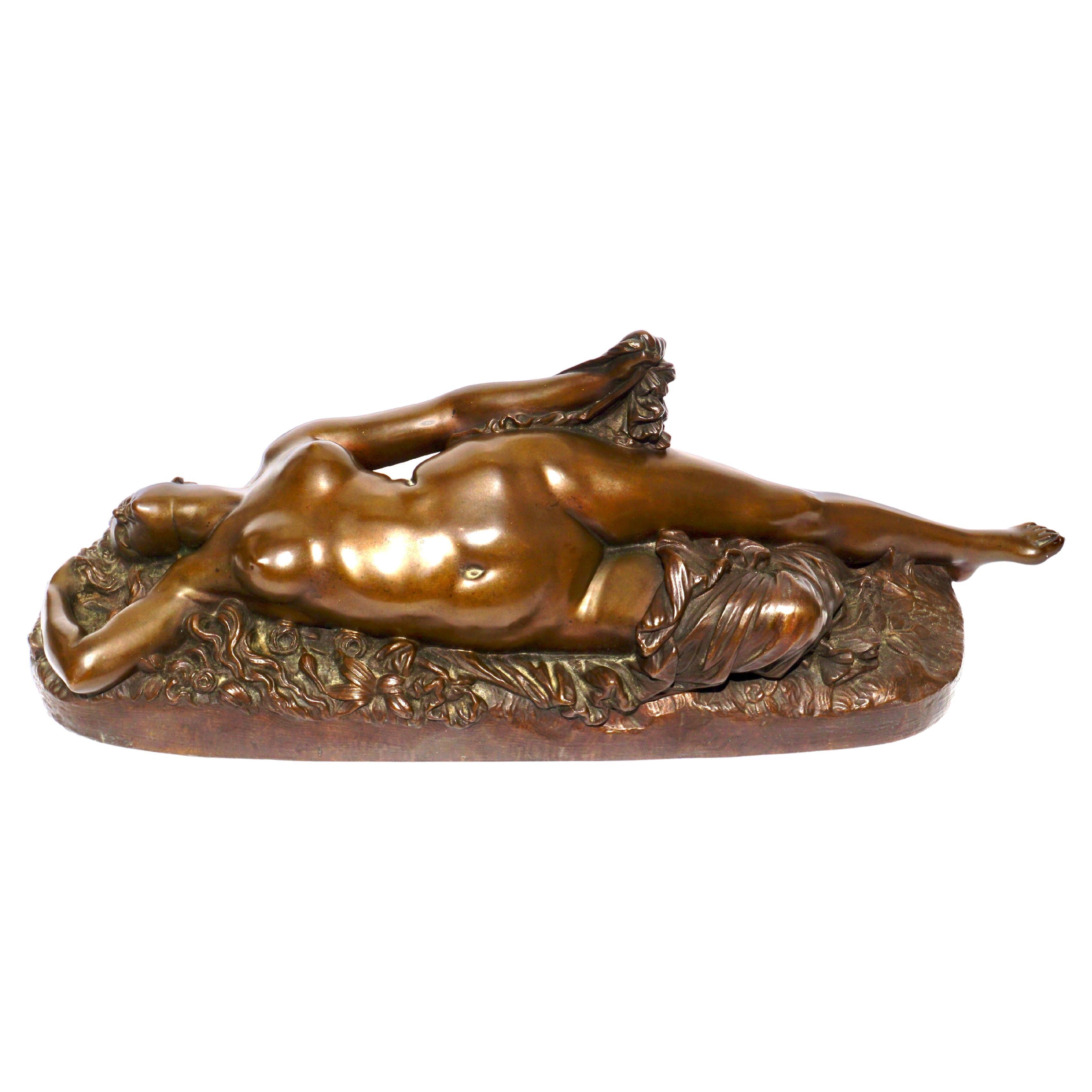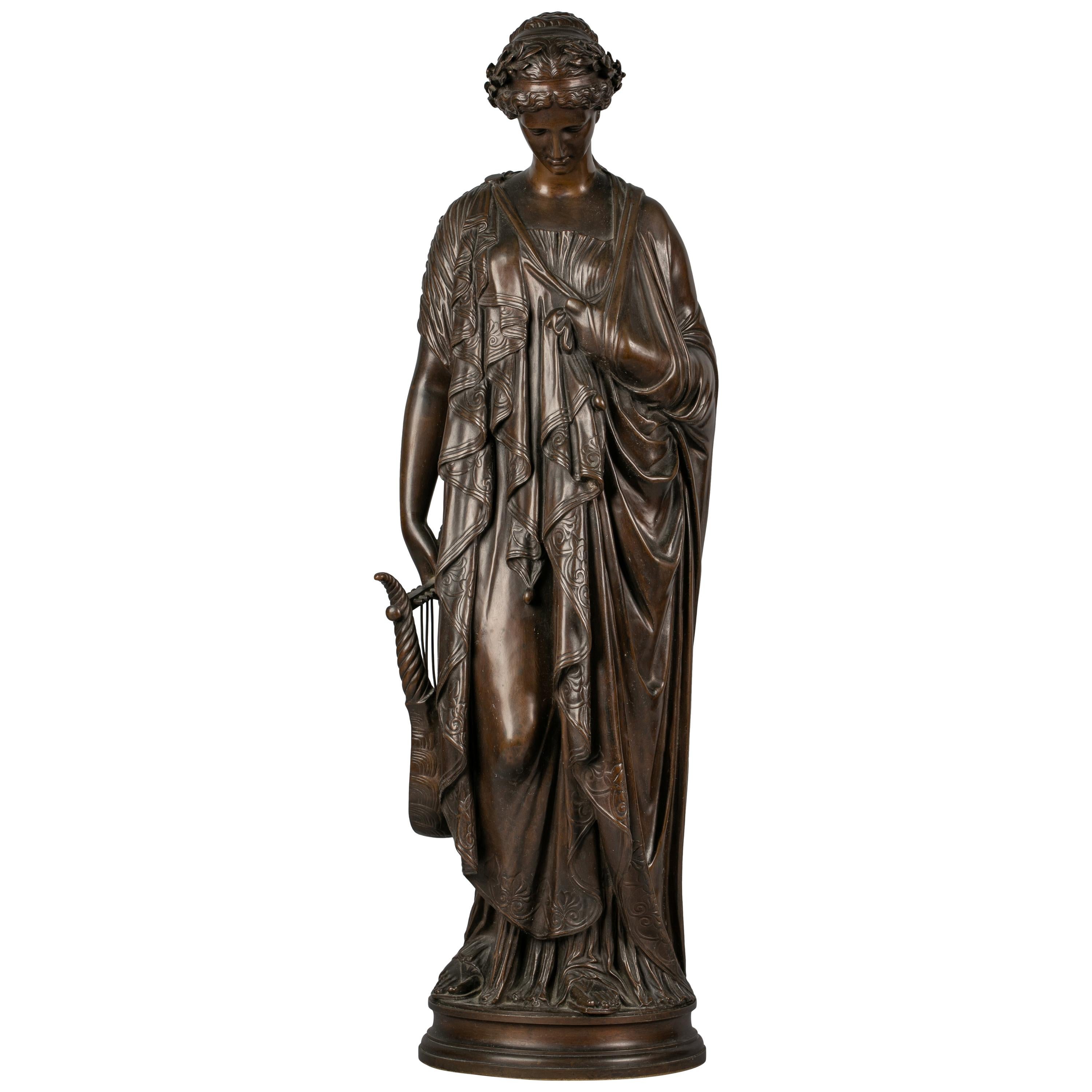Items Similar to Jean-Baptiste Auguste Clesinger, French Bronze Bust of Jesus Christ, Barbedienne
Want more images or videos?
Request additional images or videos from the seller
1 of 17
Jean-Baptiste Auguste Clesinger, French Bronze Bust of Jesus Christ, Barbedienne
About the Item
An exceptional French patinated realistic miniature bronze bust of Jesus Christ, 1858
Signed: J CLESINGER. 1858 and F. BARBEDIENNE FONDEUR, with the Reduction Mecanique seal.
Measures: 7.5" high x 5" wide x 3" deep
Very good condition. Very rare sculpture of Jesus Christ.
- Creator:Ferdinand Barbedienne (Artist)
- Dimensions:Height: 7.5 in (19.05 cm)Width: 5 in (12.7 cm)Depth: 3 in (7.62 cm)
- Materials and Techniques:
- Place of Origin:
- Period:
- Date of Manufacture:1858
- Condition:Wear consistent with age and use.
- Seller Location:New York, NY
- Reference Number:1stDibs: LU7386231544832
About the Seller
4.9
Platinum Seller
These expertly vetted sellers are 1stDibs' most experienced sellers and are rated highest by our customers.
1stDibs seller since 2022
42 sales on 1stDibs
Typical response time: <1 hour
- ShippingRetrieving quote...Ships From: New York, NY
- Return PolicyA return for this item may be initiated within 14 days of delivery.
More From This SellerView All
- Jean-Baptiste Auguste Clesinger, French Bronze Bust of Jesus Christ, BarbedienneBy Ferdinand BarbedienneLocated in New York, NYAn exceptional French patinated realistic bronze bust of Jesus Christ, circa 1858 Signed: J CLESINGER. & F. BARBEDIENNE FONDEUR, with the Reduction Me...Category
Antique 19th Century French Busts
MaterialsBronze
- Jean-Baptiste Auguste Clesinger, French Bronze Bust of Jesus Christ, BarbedienneBy Ferdinand BarbedienneLocated in New York, NYAn exceptional French patinated realistic miniature bronze bust of Jesus Christ, 1858 Signed: J CLESINGER. 1858 and F. BARBEDIENNE FONDEUR, wi...Category
Antique 19th Century French Busts
MaterialsBronze
- A Monumental Bust Sculpture of the The Holy Family, Child Jesus ChristLocated in New York, NYA Monumental Stoneware Sculpture of the The Holy Family consists of the Child Jesus, the Virgin Mary and Saint Joseph by Georges Wasterlain (1889-1963) Georges WASTERLAIN (1889-1963...Category
Antique 19th Century Unknown Figurative Sculptures
MaterialsStoneware
- Exquisite French Patinated Bronze Bust of Emperor Napoleon i, After Canova 1820By Antonio CanovaLocated in New York, NYAn exquisite French patinated bronze Herm Bust of Emperor Napoleon I, circa 1820 After Canova (1757–1822). Mounted on a solid square bronze and green marble base. Extremely fine ...Category
Antique 19th Century French Busts
MaterialsMarble, Bronze
- Exquisite French Multi-Patinated Orientalist Bronze Bust of Beauty, by RimbezBy Zacharie RimbezLocated in New York, NYAn Exquisite French multi-patinated orientalist bronze bust of a Turkish Beauty, by Zacharie Rimbez, late 19th century. Signed 'Z. Rimbez' (on the left shoulder) Measures : 22"...Category
Antique Late 19th Century Busts
MaterialsBronze
- Exquisite French Multi-Patinated Orientalist Bronze Bust of Saida, by RimbezBy Zacharie RimbezLocated in New York, NYAn exquisite French multi-patinated orientalist bronze bust of Saida, by Zacharie Rimbez, late 19th century. Signed 'Z. Rimbez' (on the left shoulder) Measures: 22" high x 13" ...Category
Antique Late 19th Century Busts
MaterialsBronze
You May Also Like
- F. Barbedienne Foundry, French Bronze Bust of Jesus ChristBy F. Barbedienne FoundryLocated in Autonomous City Buenos Aires, CABAJean-Baptiste Auguste Clesinger, French Bronze Bust of Jesus Christ, Barbedienne 1858 An exceptional French patinated realistic miniature bronze b...Category
Antique 19th Century French Mid-Century Modern Figurative Sculptures
MaterialsBronze
- Bust of Bacchante by Auguste Baptiste Clesinger, Rome, 1857By Jean Auguste Baptiste ClesingerLocated in Vancouver, British ColumbiaA large bronze bust showing a beautiful young woman depicted as a Bacchante, the Greek Goddess of Wine, her head festooned with grape branches. The bust is supported by an integral bronze plinth that at the back is inscribed with the name of the sculptor, J. Clesinger Rome 1857 dating the bronze to the time when the sculptor was 33 years old. The sculptor whose full name was Jean Auguste Baptiste Clesinger was born in 1813 in Besancon in Southern France. His father, Georges-Philippe, was a sculptor and trained Auguste in art. Auguste first exhibited at the Paris Salon in 1843 with a bust of Vicomte Jules de Vaidahon. At the 1847 Salon, he created a sensation with his Woman bitten by a serpent, produced from life-casts from his model Apollonie Sabartier who was a notorious Parisian and the mistress of many perhaps even of Clesinger himself. Later he also produced this bust of her as Bacchante. In private life, the sculptor was awarded one of France’s highest honour, the knight’s cross...Category
Antique Mid-19th Century French Romantic Busts
MaterialsBronze
- Jean Baptiste Auguste Clesinger Femme Piquée Par Un SerpentBy Jean-Baptiste Auguste ClesingerLocated in Dallas, TXJEAN-BAPSITSE AUGUSTE CLÉSINGER (FRENCH, 1814-1883) Femme piquée par un serpent Inscribed J. CLESINGER and F. BARBEDIENNE. FONDEUR Bronze, dark brown patina 8 in. (20.3 cm.) high, 22 ½ in. (57.1 cm.) wide Condition: Excellent Circa 1876 Literature: A Pingeot, Musee d'Orsay, Catalogue sommaire illustré des sculpture, Paris, 1986, p. 100-101, see also p. 19 Woman Bitten by a Serpent is an 1847 sculpture by Auguste Clésinger (1814–1883), now in the Musée d'Orsay in Paris. (Marble) It was commissioned by the industrialist Alfred Mosselman and first exhibited in the Paris Salon in 1847, where it and Thomas Couture's The Romans in their Decadence were the most commented-upon works. Clésinger had modelled his work on a life-cast of Mossellman's mistress, the demi-mondaine Apollonie Sabatier (1822–1890), later Charles Baudelaire's muse. The direct use of a life cast as the basis for a sculpture was highly controversial in the 19th century, particularly in its realism, such as the reproduction of the model's cellulite. Clésinger's friend Théophile Gautier orchestrated a response to the art critics...Category
Antique 1870s French Beaux Arts Figurative Sculptures
MaterialsBronze
- French Bronze of 'Sappho', by Jean Baptiste Clesinger, 19th CenturyLocated in New York, NYInscribed F. Barbedienne with the Collas reduction.Category
Antique 19th Century French Figurative Sculptures
MaterialsBronze
- Fine Quality Pair of Patinated Bronze Statues by Jean-Baptiste ClésingerLocated in New York, NYInscribed ‘J. CLESINGER.; F. BARBEDIENNE .FONDEUR; REDUCTION MECANIQUE, A. COLLAS’ Maker: Jean-Baptiste Clésinger (French, 1814-1883) Date: 19...Category
Antique 19th Century French Figurative Sculptures
MaterialsBronze
- 19th Century Animalier Bronze "Taureau Romano" by Jean-Baptiste ClesingerBy Jean-Baptiste ClésingerLocated in London, GBA magnificent late 19th century French bronze study of a large bull in a proud stance, the bronze exhibiting excellent hand chased surface detail and fine rich brown patina. Raised o...Category
Antique 19th Century French Art Nouveau Animal Sculptures
MaterialsBronze
